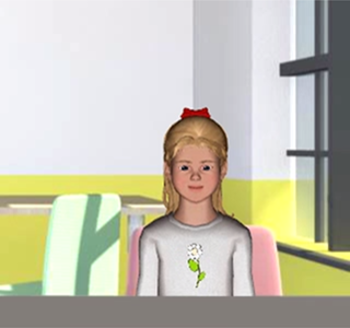Question
Do you find that in patients with tracheostomy tubes and decreased upper airway air passage, there is less response to stimulation during the air pulse during FEEST?
Answer
The presence of a tracheostomy tube can contribute to a resultant reduction to laryngopharyngeal sensory perception. The airflow path is manipulated from its natural course through the larynx. Instead, the route of inspiratory and expiratory functions is through the tracheostomy tube itself. The by-product can be a neurological change to the airway valving responses in the larynx. Since there is no air passage through the glottis, there can be potential reduction in sensation due at least in part to this deviation in air movement. There have been findings of physiologic changes in the laryngeal vestibule valving from resultant circumventing the upper airway for breathing using a tracheostomy tube (Feldman, Deal, Urgugart. Disturbance of swallowing after tracheostomy. Lancet, 1966, 954-955). With the presence of the disrupted laryngeal reflexes and the potential disuse atrophy of laryngeal muscles in tracheostomy tube placement, it would seem probable that an exam like FEEST could help determine the presence of reduction in laryngopharyngeal sensation and subsequent impaired laryngeal adductor reflex in the presence of the tracheostomy tube (Eibling, Gross. 1996. Subglottic air pressure: a key component of swallowing efficiency. Annals of Otology Rhinology and Laryngology, 253-258.). FEEST evaluates laryngopharyngeal sensation by determining the presence or absence of a laryngeal adductor reflex based on delivery of measured air pulse stimulation to the arytenoids mucosa. There are additional variables that may impact FEEST sensory testing in the presence of a tracheostomy tube, including: size of tracheostomy tube, presence of tracheostomy tube capping or passy muir speaking valve, tracheostomy tube cuff status, and the use of a ventilator, as many modifications in these conditions could impact airflow of the supraglottis.
This Ask the Expert was taken from the course entitled: Endoscopic Swallowing Exam to Evaluate Dysphagia presented by Eric Blicker, M.A., CCC-SLP.D, BRS-S.
Visit the SpeechPathology.com eLearning Library to view all of our live, recorded, and text-based courses on a variety of topics.
Eric Blicker, M.A., CCC-SLP.D, BRS-S, is an ASHA board recognized specialist in swallowing disorders. Eric received his doctoral degree from Nova Southeastern University and was trained in FEESST by Dr Jonathan Aviv, the otolaryngologist who developed FEESST. He has provided FEES training courses in CT, MA, FL, MO, CA.

